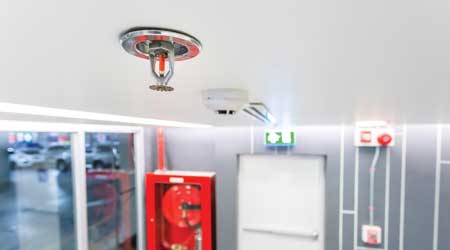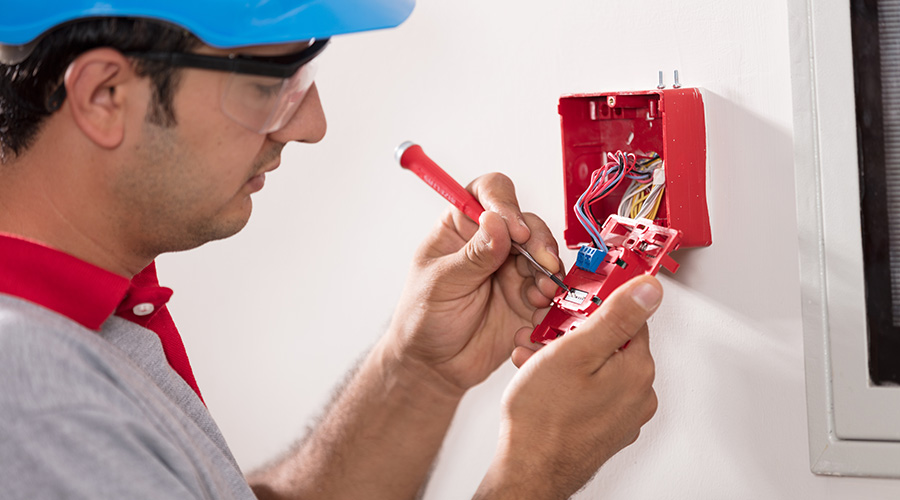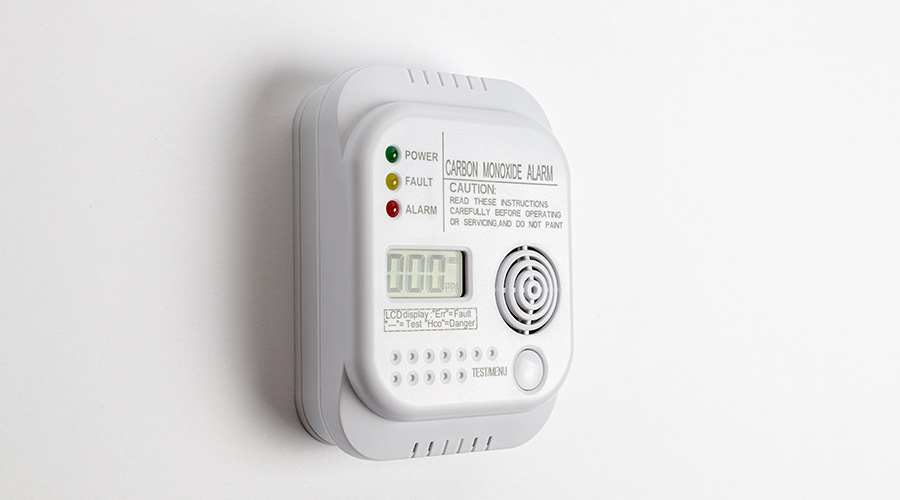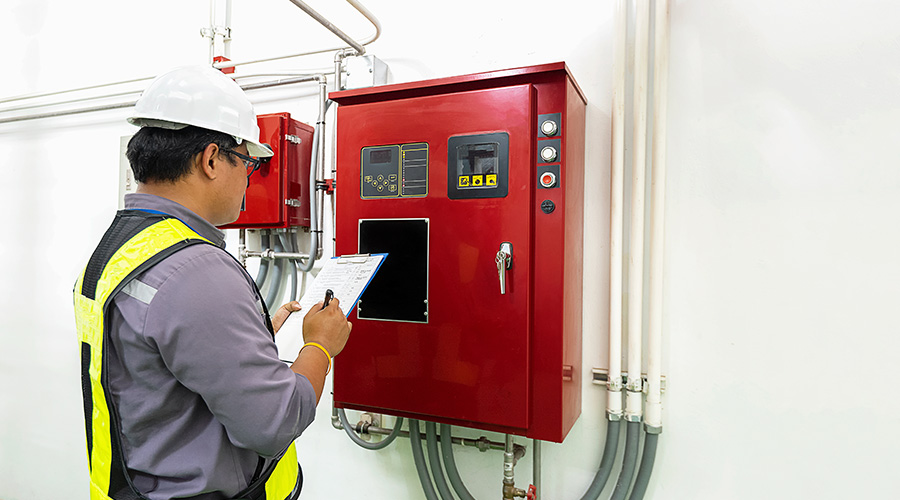Regular Inspections and Testing Keep Fire Sprinklers Working Properly
NFPA 25 prescribes the required level and frequency of inspections and testing for fire sprinklers.
It’s also critical to inspect beyond the sprinkler heads. “Make sure the water supply valves are open, make sure normal pressure is apparent on the gauges, and make sure the fire sprinklers aren’t obstructed by storage piled too high or other items,” Dellasanta says. NFPA 25 provides information on the required type and frequency of inspections, he adds, noting that it can vary with the type of system.
In addition, in all buildings, a deeper inspection is periodically required, Dellasanta says. This entails opening the system and checking for corrosion and obstructions within it, among other things.
Building owners and facility managers need to ensure they’re following relevant standards when designing, installing, and maintaining sprinkler systems. “Both lives and property depend on this,” Puchovksy says.
NFPA standards provide guidance
The foundation for an effective sprinkler inspection, test, and maintenance program are a group of NFPA standards that include the following:
NFPA 25: Standard for the Inspection, Testing, and Maintenance of Water. This standard provides guidelines for the minimum requirements associated with inspection, testing, and maintenance of water-based fire protection systems. NFPA 25 also covers actions to be taken when there is a change in, for instance, occupancy or water supply that may impact sprinkler system performance. “The purpose of the NFPA 25 standard is to ensure as much as possible that sprinkler systems will be functional when needed in response to a fire, including identifying potential common sprinkler system failures,” says Eric Lee, technical director, fire protection, with Environmental Systems Design.
NFPA 13: Standard for the Installation of Sprinkler Systems. This standard covers sprinkler system design approaches, system installation, and component options.
NFPA 4: Standard for Integrated Fire Protection and Life Safety System Testing. This standard provides minimum requirements for testing integrated fire protection and life safety systems, when such testing is required by the design documents, commissioning plan, governing laws, codes, regulations, or standards.
Karen Kroll, a contributing editor for Building Operating Management, has written extensively about real estate and facility issues.
Related Topics:















